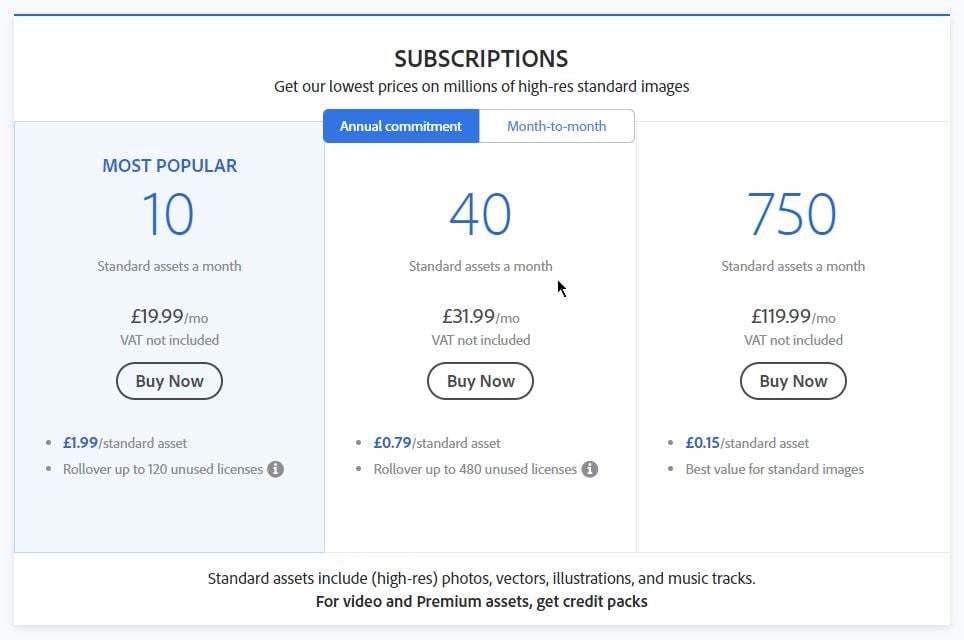If you’re a photographer or an illustrator, the thought of earning money from your creative work is probably quite appealing. Adobe Stock offers a remarkable platform for creative individuals to monetize their images, videos, and designs. But do you know how the earnings landscape works? The beauty of Adobe Stock lies not just in its vast customer reach but also in how it pays contributors for their work. Understanding how these earnings are calculated can help you strategize your submissions and increase your revenue. Let’s dive into the nuts and bolts of
Factors Influencing Payment Amounts

The payment you receive from Adobe Stock is not a fixed number—it varies based on several factors. Here are the key elements that come into play:
- Type of Content: Your earnings largely depend on whether you’re providing images, videos, or templates. Typically, videos can earn you more due to production costs and demand.
- Subscription vs. Credit Sales: Adobe Stock operates on a dual sales model. If a customer buys a subscription, your payout will differ from a one-time credit sale, generally yielding less per image.
- Royalty Rate: Adobe provides contributors a royalty rate that can range from 33% to 60%. New contributors generally start at a lower rate, which increases as you sell more.
- Quality and Resolution: High-quality, high-resolution images that meet Adobe's guidelines often fetch a better price, attracting more buyers.
- Market Demand: Pay attention to trends! Popular themes and subjects can boost sales significantly. If your work aligns with current market interests, your earnings may see a spike.
By keeping these factors in mind, you can enhance your potential earnings with Adobe Stock. Remember, the more you understand about what influences your payouts, the better you’ll be able to optimize your contributions for profit!
Also Read This: How to Perform Slow Motion Dance Steps on Dailymotion and Master Cool Dance Moves
Different Licensing Models and Their Impact on Payments

When you contribute images to Adobe Stock, it's crucial to understand the various licensing models available, as these significantly influence how much you earn. Adobe Stock primarily offers two types of licenses: *Standard Licenses and Extended Licenses. Let’s break down each one.
- Standard License: This is the most common type of license purchased by buyers and allows for a wide range of uses, including websites, advertising, and social media. However, the standard license has some limitations. For instance, it typically permits the buyer to use the images in marketing and promotional materials but doesn’t allow for the creation of merchandise or resale. Payment for images under a standard license is generally lower, but since these licenses are bought frequently, you can still profit from high volume.
- Extended License: This option provides broader usage rights. Extended licenses allow for things like merchandising* (for instance, T-shirts or posters), which means your images can make more money per sale. Although fewer buyers may opt for the extended license, the payout when they do can be significantly higher. This means if your work specializes in unique designs that may be used commercially, targeting extended licenses could increase your overall earnings.
Ultimately, understanding these licensing models allows you to adjust your marketing strategy better and leads to making more informed decisions about the types of images you upload to Adobe Stock.
Also Read This: How to Blur Images in Google Slides
How to Maximize Your Earnings on Adobe Stock
If you’re keen on boosting your earnings from Adobe Stock, you're in the right place! Following some strategic tips can significantly increase your income while ensuring you get the most out of every image you contribute. Here’s how:
- Focus on Quality: It’s essential to upload high-resolution, professionally edited images. The clearer and more appealing your images are, the more likely they are to sell. Always prioritize quality over quantity.
- Optimize Keywords: Use relevant and targeted keywords when you upload an image. Consider what potential buyers might search for. Using the right keywords can ensure your images are discoverable.
- Explore Trends: Always keep an eye on current trends. Whether it’s seasonal content or trending topics, knowing what buyers are looking for can increase your chances of making a sale. Utilize social media platforms or trend analysis tools to stay updated.
- Diversify Your Portfolio: Don't limit yourself to one genre. Consider uploading images from different categories like lifestyle, business, nature, and technology. A varied portfolio attracts a broader range of customers.
- Promote Your Work: Leverage social media channels to showcase your images. Create a professional presence on platforms like Instagram, Pinterest, and Facebook to drive traffic to your Adobe Stock profile.
- Regular Contributions: The more consistently you upload, the better chance you have of being noticed by buyers. Make it a habit to upload new images regularly to keep your portfolio fresh and appealing.
By applying these strategies, you’ll pave the way to maximizing your earnings on Adobe Stock. Remember, persistence, creativity, and adaptation can really pay off in the long run!
Also Read This: Shop ’til You Drop(ship): AliExpress to Amazon Business
Comparison with Other Stock Photo Platforms
When it comes to selling photos online, there are numerous platforms out there, each offering its own set of features, payment structures, and audience reach. Adobe Stock stands out in many ways, but how does it compare to other popular stock photo platforms? Let's break it down!
1. Commission Rates:
- Adobe Stock: Typically offers contributors a 33% commission on image sales, which can scale based on your sales volume.
- Shutterstock: Starts with 15% for new contributors and can go up to 40% for top sellers.
- iStock (by Getty Images): Offers between 15% to 45% based on exclusivity and performance.
- Dreamstime: Offers a sliding scale from 25% to 60%, depending on your contributor level.
2. Market Reach:
- Adobe Stock: Has seamless integration with Adobe Creative Cloud apps, making it a hub for designers and creatives.
- Shutterstock: One of the largest marketplaces with millions of registered users, which means more exposure.
- iStock: Well-known for editorial content, targeting marketing and media professionals.
3. User Experience:
- Adobe Stock: Intuitive interface with direct access to Adobe’s suite.
- Shutterstock: Clean design but may feel crowded due to the large volume of images.
- iStock: User-friendly, especially for those familiar with Getty’s ecosystem.
In conclusion, while Adobe Stock has its advantages, the best platform for you will depend on your specific needs and goals as a contributor.
Conclusion: Making the Most of Adobe Stock
Adobe Stock can be a goldmine for photographers and content creators willing to invest the time and effort. But how can you ensure you’re maximizing your earnings? Here are a few tips that could make a significant difference!
1. Upload Quality Content: Always prioritize quality over quantity. Images that are sharp, well-composed, and meet Adobe’s standards will usually perform better in terms of sales.
2. Optimize Your Metadata: Effective tagging and keywording can greatly enhance your visibility. Think about what users might search for and include those terms in your descriptions.
3. Keep Up with Trends: Stock photography is influenced by current trends. Stay updated on what kinds of images are in demand—this could include seasonal themes, social issues, or popular aesthetics.
4. Engage with the Community: Be active in forums and communities related to Adobe Stock. You can gain insights from other contributors and share tips and tricks to improve your portfolio.
5. Regularly Update Your Portfolio: As markets evolve, keep your portfolio fresh. Remove outdated images and replace them with new work to keep your offerings current.
By following these strategies, you can significantly increase your chances of success on Adobe Stock and turn your passion for photography into a rewarding venture!
 admin
admin








